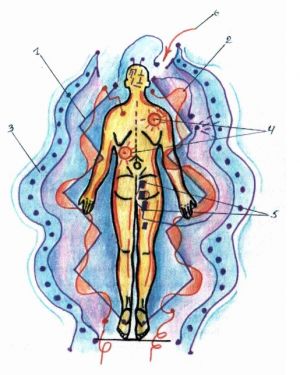Indigo children (variously called the Indigo children, Crystal Children, the Children of Oz) is a pseudoscientific name given to children who are claimed to possess special, unusual and/or supernatural traits or abilities.
Origin
The idea is based on New Age concepts developed in the 1970s by Nancy Ann Tappe, a parapsychologist who developed a system for classifying people's personalities according to the hue of their auras, described in her 1982 book, Understanding Your Life Through Colors.
Description
"The Indigo label describes the energy pattern of human behavior which exists in over 95% of the children born in the last 10 years … This phenomena is happening globally and eventually the Indigos will replace all other colors. As small children, Indigo’s are easy to recognize by their unusually large, clear eyes. Extremely bright, precocious children with an amazing memory and a strong desire to live instinctively, these children of the next millennium are sensitive, gifted souls with an evolved consciousness who have come here to help change the vibrations of our lives and create one land, one globe and one species. They are our bridge to the future." (Nancy Ann Tappe)
The terms, Indigo and Crystal were given to two generations of children, because they most accurately describe their aura colors and energy patterns. Indigo Children have a lot of indigo blue in their auras. This is the color of the "third eye chakra," which is an energy center inside the head located between the two eyebrows. This chakra regulates clairvoyance, or the ability to see energy, visions, and spirits.
The ten most common traits of Indigo Children
- They come into the world with a feeling of royalty (and often act like it).
- They have a feeling of "deserving to be here," and are surprised when others don't share that.
- Self-worth is not a big issue. They often tell the parents "who they are."
- They have difficulty with absolute authority (authority without explanation or choice).
- They simply will not do certain things; for example - waiting in line is difficult for them.
- They get frustrated with systems that are ritual-oriented and don't require creative thought.
- They often see better ways of doing things, both at home and at school, which makes them seem like "system busters" - (nonconforming to any system).
- They seem antisocial unless they are with their own kind. If there are no others of like consciousness around them, they often let no other human understand them. School is extremely difficult for them socially.
- They will not respond to "guilt" discipline - (Wait till you father gets home and finds out what you did").
- They are not shy in letting you know what they need.
History
In the 1999 book The Indigo Children, Lee Carroll and Jan Tober focus on raising an Indigo Child. Some of the main attributes they describe are a sense of "deserving to be here" and "knowing who they are," difficulty with authority, a dislike of activities that don't require creative thought and a feeling of royalty (and acting like it). The concept of indigo children gained popular interest with the publication of a series of books in the late 1990s and the release of several films in the following decade. A variety of books, conferences and related materials have been created surrounding belief in the idea of indigo children and their nature and abilities. These beliefs range from their being the next stage in human evolution or possessing paranormal abilities such as telepathy to the belief that they are simply more empathic and creative than their peers.
Analysis
- In the spiritual community, there are many who anticipate the Emergence of a Golden Age to come. An important part of this awakening that is occuring is the coming of Children with an awakened Consciousness.
- According to research psychologist Russell Barkley, the New Age movement has yet to produce empirical evidence of the existence of indigo children, as the 17 traits most commonly attributed to them were akin to the Forer effect (i.e., so vague they could describe nearly anyone). Many critics see the concept of indigo children as made up of extremely general traits, a sham diagnosis that is an alternative to a medical diagnosis, with a complete lack of science or studies to support it.
- Many children labeled indigo by their parents are diagnosed with attention-deficit hyperactivity disorder (ADHD) and Tober and Carroll's book The Indigo Children linked the concept with diagnosis of ADHD.
- Susan W. Whedon suggests in an 2009 article in Nova Religio that the social construction of Indigo Children is a response to an "apparent crisis of American childhood." Whedon explains that the crisis is evident in the increase in "diagnoses of ADD and ADHD in American children", and that "heightened awareness of youth violence" caused parents to "take matters in their own hands." Parents began medicating and diagnosing their offspring as Indigo Children as a means of "redeeming" them for their improper behavior stemming from ADD and ADHD.

